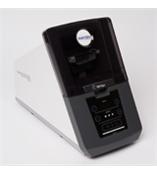来宝网 2015/7/8点击1203次
Spatial training preserves associative memory capacity with augmentation of dendrite ramification and spine generation in Tg2576 mice
Scientific Reports 5, Article number 9488, doi:10.1038/srep09488
These authors contributed equally to this work
Xia Jiang
Gao-Shang Chai
Affiliations
Department of Pathophysiology, Key Laboratory of Ministry of Education for Neurological Disorders, the School of Basal Medicine, Tongji Medical College, Huazhong University of Science and Technology, Wuhan, 430030. P. R. China
Xia Jiang,
Gao-Shang Chai,
Zhi-Hao Wang,
Yu Hu,
Xiao-Guang Li,
Zhi-Wei Ma,
Qun Wang,
Jian-Zhi Wang &
Gong-Ping Liu
Department of Pathology, Hubei University of Chinese Medicine, Wuhan, 430065. P. R. China
Xia Jiang
Department of Basic Medicine, Wuxi Medical School, Jiangnan University, Wuxi, Jiangsu Province, 214122, P. R. China
Gao-Shang Chai
Alzheimer’s disease (AD) is the most common neurodegenerative disorder and there is currently no efficient cure for this devastating disease. Cognitive stimulation can delay memory loss during aging and in patients with mild cognitive impairment. In 3 × Tg-AD mice, training decreased the neuropathologies with transient amelioration of memory decline. However, the neurobiological mechanisms underlying the learning-improved memory capacity are poorly understood. Here, we found in Tg2576 mice spatial training in Morris water maze (MWM) remarkably improved the subsequent associative memory acquisition detected by contextual fear conditioning. We also found that spatial training enhanced long term potentiation, dendrite ramification and spine generation in hippocampal dentate gyrus (DG) and CA1 neurons at 24?h after the training. In the molecular level, the MWM training remarkably activated calcium/calmodulin-dependent protein kinase II (CaMKII) with elevation of glutamate AMPA receptor GluA1 subunit (GluA1), postsynaptic density protein 93 (PSD93) and postsynaptic density protein 95 (PSD95) in the hippocampus. Finally, the training also significantly ameliorated AD-like tau and amyloid pathologies. We conclude that spatial training in MWM preserves associative memory capacity in Tg2576 mice, and the mechanisms involve augmentation of dendrite ramification and spine generation in hippocampus.
华中科技大学同济医学院病理学与病理生理学系,教育部重点实验室;湖北中医药大学病理系,江南大学无锡医学院研究团队发现空间联系练习能有效增进海马树突分化。
海马广泛地被认为是一个重要的结构,涉及认知和感官过程如记忆及痛苦。本研究旨在了解空间培训如何对AD小鼠海马区域的改变。
阿尔茨海默病 (AD) 是最常见的神经退行性疾病,目前尚无有效方法治愈这种致命疾病。认知刺激可以延迟记忆丧失,老化过程和轻度认知功能障碍患者。对3 只 Tg-AD 小鼠进行培训,可减少神经病变及能瞬态改善记忆力下降 。然而,对改善学习记忆能力的神经生物学机制了解依然甚少。在这研究,我们发现针对 Tg2576 小鼠在水迷宫(MWM)做出空间培训后,通过检测情境恐惧制约,发现培训能显著提高随后的联想记忆采集。我们还发现空间培训24小时后,能加强海马齿状回 (DG) 和CA1 区神经元的长时程增强、 树突分枝和脊柱生长。在分子水平上,MWM 培训显著激活钙/钙调素依赖性蛋白激酶 II (CaMKII)并伴随 GluA1 谷氨酸 AMPA 受体亚单位 (GluA1)、 突触后致密蛋白 93 (PSD93) 和海马突触后致密蛋白 95 (PSD95)等值升高。最后,培训也大大改善AD-like tau及淀粉样病变之产生。得出结论为 MWM 的空间培训能保留 Tg2576 小鼠的联想记忆能力,而其机制涉及增强海马树突分枝和脊柱生长。
研究使用日本AlphaMed 公司的MED64通道胞外电场记录系统进行LTP记录,MED64系统能够在生物样本中长时间的记录多种胞外信号的场电位。急性或者培养的生物样本可以直接种在64个平面微电极上,同时刺激和记录信号,优秀的信噪比能够带给科研学者更可靠的数据。能轻松的引导出LTP 把繁琐的实验,变成人人皆可操作的简单工作。MED64系统被广泛应用于中央和周围神经系统以及心脏等课题的研究,无论对于急性切片还是培养的细胞组织来说,MED64系统都能提供良好的研究方法。尤其在急性切片信号记录方面,MED64系统具有无与伦比的低噪声电极配合内置的刺激器使得突触电位更易诱发,用户友好的软件界面使用户对数据处理完全无后顾之忧。
